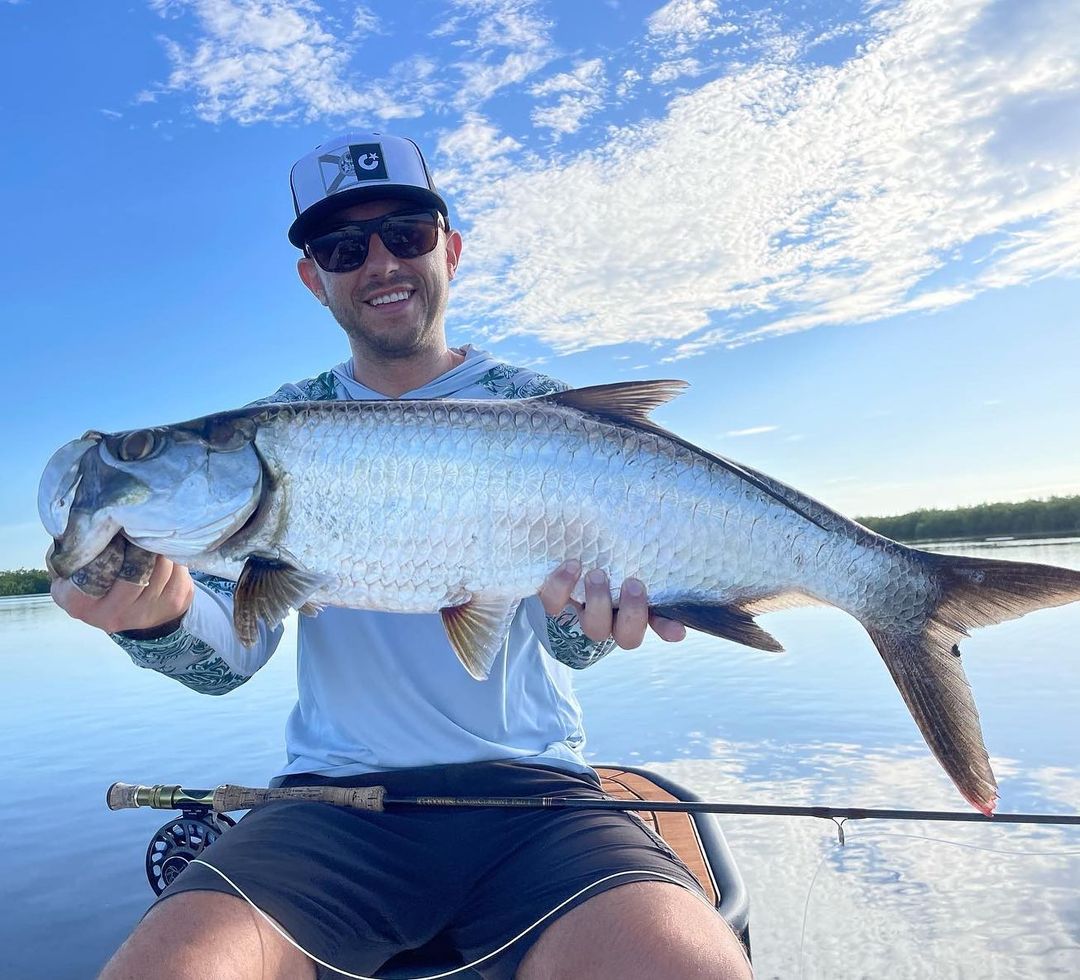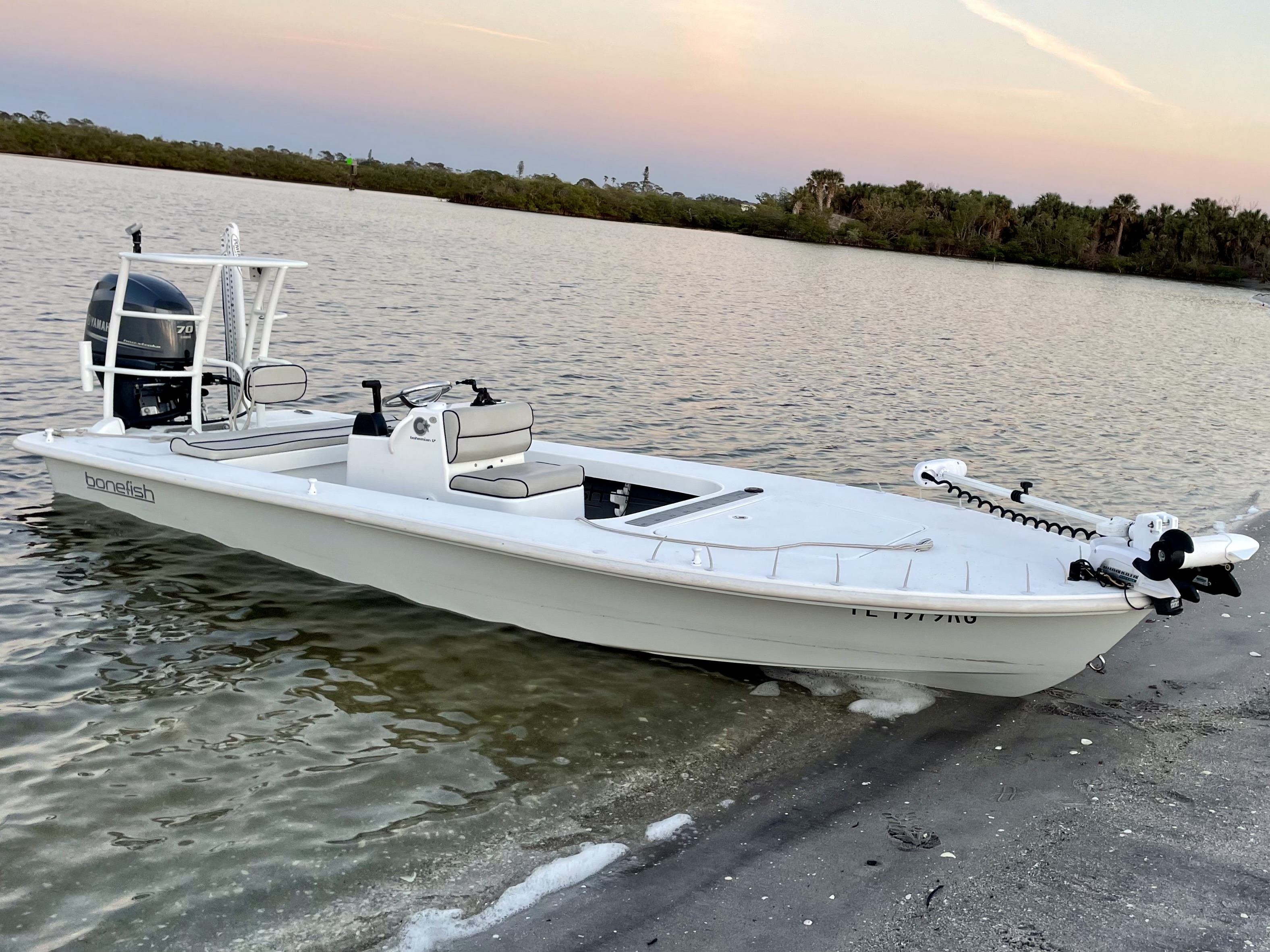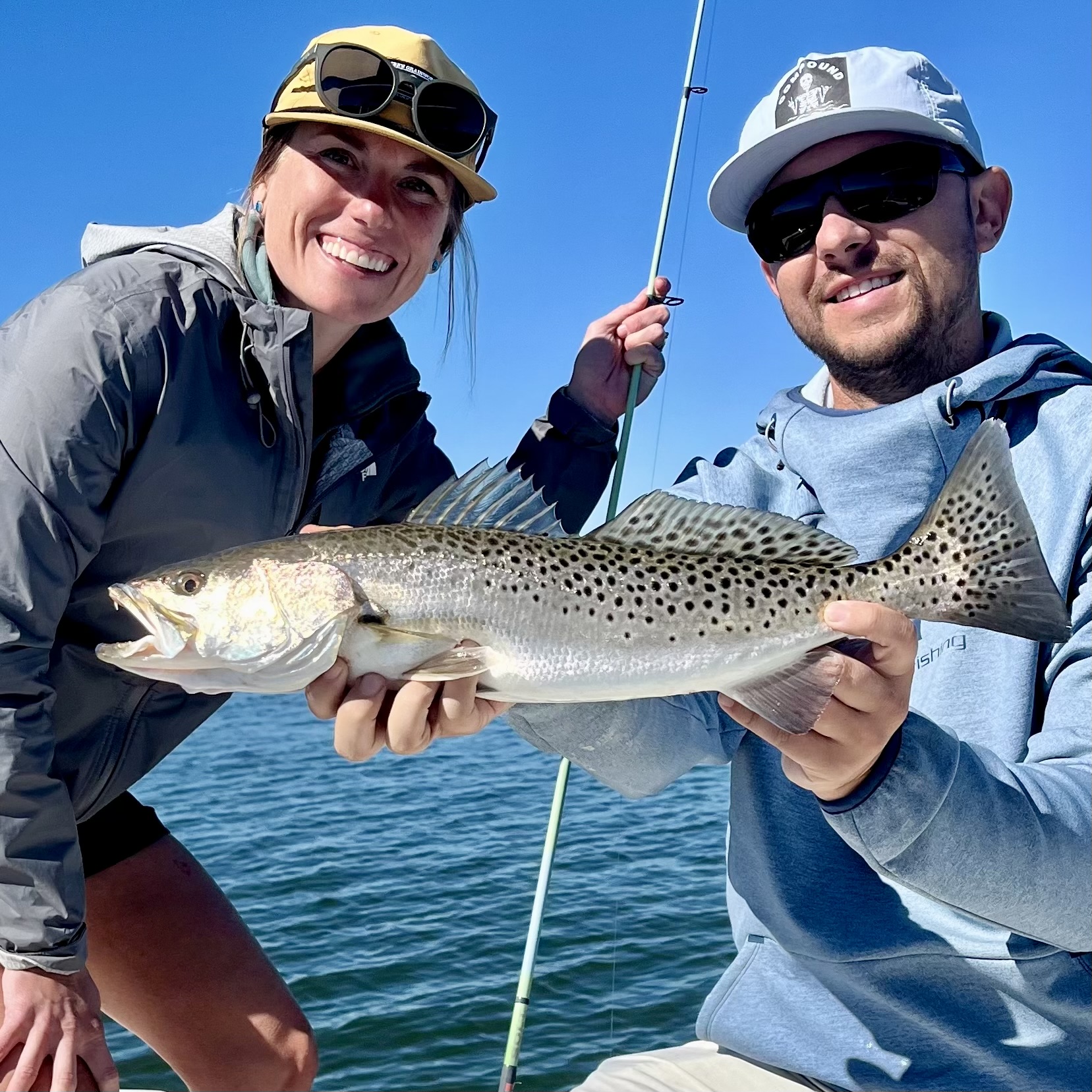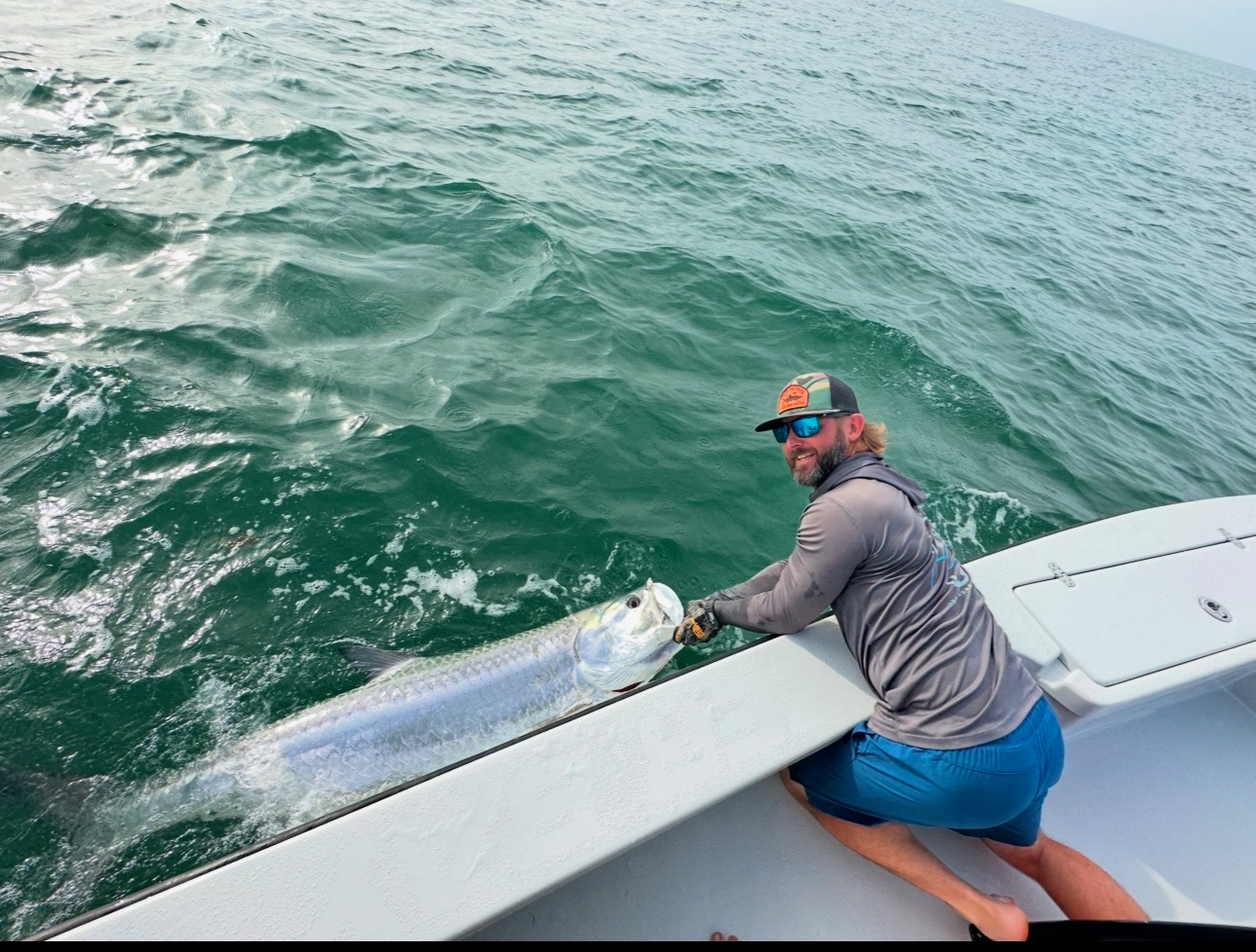Inshore, Nearshore, Flats in Sarasota
Sarasota Bay Fly & Light Tackle
Inshore, Nearshore, Flats in Sarasota
Private 4 Hour - Sarasota Bay
Inshore, Nearshore, Flats in Sarasota
Tarpon Trips Sarasota
2 Hour Trip Fish & Fun
Seasonal Tarpon Fishing May-july
Inshore, Nearshore Fishing in Sarasota
Kid's Trip
Inshore, Nearshore Fishing in Sarasota
Chasing Monsters - 24’ Pathfinder
Inshore, Nearshore Fishing in Sarasota
Bountiful Backwaters Of Sarasota
Inshore, Nearshore, Jetty in Sarasota
Sarasota’s Premier Fishing Trip
Inshore, Nearshore, Flats in Sarasota
Sarasota Inshore/Nearshore
We started Captain Experiences to make it easy to book fishing and hunting guides around the world. With over 2,000 Damn Good Guides, our platform makes finding and booking a trip seamless. Head here to check out our trips.
Tarpon Overview

Tarpon, also known as the silver king, are a species of fish widely recognized for their large size and acrobatic ability. These iconic fish are known for their impressive ability to leap out of the water and for their hard-fighting nature, making them a popular game fish for sport fishermen.
Tarpon can grow up to 8 feet (2.4 meters) long and weigh up to 280 pounds (127 kg). They have a distinctive shiny, silver color, and large scales. Tarpon are found in warm coastal waters, including the Atlantic Ocean, Gulf of Mexico, and the Caribbean Sea.
Tarpon are known for their ability to gulp air into their swim bladder, which helps them survive in oxygen-poor waters. They are also unique in that they have a mouth that is adapted for feeding on small prey, including crustaceans and fish. As a top predator in their environment, tarpon are important to the ecosystem and help regulate the populations of other fish species.
When Can I Fish For Tarpon In Sarasota?

Are you ready for an epic fishing adventure? Look no further than Sarasota, where the Tarpon fishing is nothing short of legendary. The waters around Sarasota are known for their abundant tarpon population, with the peak season typically starting in late April and continuing through July, which is when the famous “tarpon run” happens in the panhandle.
Florida Tarpon Run
The tarpon run is a seasonal migration of tarpon along the coast of Florida, where thousands move from their wintering grounds in the south to their summer spawning grounds in the north. The migration can vary slightly from year to year, but generally, the tarpon arrive in Sarasota in late April and stay through June or July. During this time, anglers come from all over to try to catch these elusive fish. Given the popularity of this event, it’s key to reserve a fishing charter in Sarasota ahead of the season to lock in your dates.
Where Can I Fish For Tarpon Near Sarasota?

Tarpon can be found in a variety of locations within the waters of Sarasota, including inlets, passes, bays, and along the beaches. Here are some popular places to fish for tarpon near Sarasota:
Boca Grande Pass
Located about an hour south of Sarasota, Boca Grande Pass is known as the "Tarpon Capital of the World" and is a top destination for tarpon fishing.
Longboat Pass
Located on the north end of Longboat Key, Longboat Pass is a popular spot for tarpon fishing, particularly during the summer months.
Sarasota Bay
The bay is home to a large population of tarpon, and is a great spot for both boat and shore fishing.
New Pass
Located on the south end of Longboat Key, New Pass is another great spot for tarpon fishing.
Venice Inlet
Located about 30 minutes south of Sarasota, the Venice Inlet is a popular spot for tarpon fishing, particularly during the summer months.
Siesta Key
Siesta Key is a barrier island located just south of Sarasota and is home to several great spots for tarpon fishing, including the Siesta Key Bridge and Turtle Beach.
Fishing Techniques For Catching Tarpon
To increase your chances of catching tarpon, it's important to understand their feeding behavior and migration patterns. Tarpon are known for their feeding activity during the outgoing tide, especially during the hours of dawn and dusk. They typically feed on smaller fish and crustaceans, so using bait that imitates their natural prey, such as live mullet or crabs, can be effective. Here are some fishing techniques that can help you catch tarpon:
Fly Fishing for Tarpon

Tarpon are often targeted with fly fishing gear, and this can be one of the most exciting ways to catch them. Use a 10 to 12-weight rod with a floating line and a 6 to 8-foot leader. Flies such as tarpon toads, bunny flies, and baitfish patterns are effective.
Live Bait Fishing for Tarpon
Live bait can be very effective for tarpon fishing. Use live mullet, pilchards, or crabs as bait. You can fish these baits on a circle hook with a leader and weight.
Jigging for Tarpon
Vertical jigging can be very effective for catching tarpon. Use a heavy jig, around 2 to 4 ounces, and jig it up and down near the bottom. Tarpon often take the jig on the drop.
Topwater Fishing for Tarpon
The silver king can be caught on topwater lures such as poppers and surface walkers. These lures imitate fleeing baitfish and can be very effective in the early morning or late afternoon when tarpon are active.
Chumming for Tarpon
Chumming can be effective for attracting tarpon to your fishing area. Use a chum bag filled with small pieces of baitfish or shrimp to create a scent trail that will draw tarpon to your boat.
Remember, tarpon are a strong and acrobatic fish, so be prepared for a challenging fight when you hook one. It's important to handle tarpon gently and release them quickly to ensure their survival.
Tarpon Regulations in Florida

It's important to note that tarpon fishing in Florida is highly regulated, and a special license is required to catch and keep tarpon. There is no minimum size limit or daily bag limit, as tarpon are a catch-and-release species in the Gulf. It’s crucial to handle them carefully and release them quickly to ensure their survival.
Tarpon Tags in Florida
The usage of tarpon tags is restricted to capturing tarpon that have the potential to become state record or IGFA record-sized. If desired, taxidermy mounts can be created using length and girth measurements along with a photograph.
Why can you not bring up tarpon?

While tarpon are known for the size and strength, they’re highly susceptible to stress and physical harm if they are brought out of the water.
Tarpon are a type of fish that require a constant flow of water over their gills in order to breathe. When they are removed from the water, they are unable to breathe properly and can quickly become stressed, exhausted, and even die. Additionally, the physical weight of the fish can cause damage to their internal organs and spine when lifted out of the water, which can lead to serious injury or death. Because of this, tarpon over 40 inches are required by FWC to stay in the water (with the exception of a tag).
Therefore, it is recommended that tarpon are kept in the water as much as possible during the catching and releasing process. If it is necessary to remove a tarpon from the water for a photograph or measurement, it should be done as quickly as possible and with great care to minimize any harm to the fish. It is also important to revive the fish in the water before releasing it to ensure its survival.
Additionally, anglers need to avoid targeting tarpon from bridges or piers. The release would either require specialized lifting equipment or cutting the line, resulting in a lengthy amount of line trailing behind the fish when released.
Book A Sarasota Tarpon Fishing Trip
If you're new to tarpon fishing or want to check the silver king off your bucket list, definitely consider chartering a guide. Our local guides will have the knowledge and experience to help you find the best spots for casting your line, select the right tackle and bait, provide all the gear you need, and hone your techniques.
Once you're out on the water, keep your eyes peeled for the telltale signs of Tarpon - a shimmering flash or a big splash. And when you feel that first tug on your line, get ready for the fight of your life.
Tarpon are known for their acrobatic jumps and powerful runs, so be prepared for a battle. But with a little skill and a lot of luck, you'll soon have one of these bucket list fish in your hands, ready to release back into the sea. Ditch the desk, seize the day!
Hannah Shebat
Updated on August 1, 2023

November 7, 2023

April 15, 2022

April 26, 2022

May 13, 2024

June 28, 2023
Related Articles
April 11, 2023
August 8, 2022
June 13, 2024
Featured Locations
- Fishing Charters Near Me
- Austin Fishing Guides
- Biloxi Fishing Charters
- Bradenton Fishing Charters
- Cabo San Lucas Fishing Charters
- Cancun Fishing Charters
- Cape Coral Fishing Charters
- Charleston Fishing Charters
- Clearwater Fishing Charters
- Corpus Christi Fishing Charters
- Crystal River Fishing Charters
- Dauphin Island Fishing Charters
- Daytona Beach Fishing Charters
- Destin Fishing Charters
- Fort Lauderdale Fishing Charters
- Fort Myers Fishing Charters
- Fort Walton Beach Fishing Charters
- Galveston Fishing Charters
- Gulf Shores Fishing Charters
- Hatteras Fishing Charters
- Hilton Head Fishing Charters
- Islamorada Fishing Charters
- Jacksonville Fishing Charters
- Jupiter Fishing Charters
- Key Largo Fishing Charters
- Key West Fishing Charters
- Kona Fishing Charters
- Lakeside Marblehead Fishing Charters
- Marathon Fishing Charters
- Marco Island Fishing Charters
- Miami Fishing Charters
- Montauk Fishing Charters
- Morehead City Fishing Charters
- Naples Fishing Charters
- New Orleans Fishing Charters
- New Smyrna Beach Fishing Charters
- Ocean City Fishing Charters
- Orange Beach Fishing Charters
- Panama City Beach Fishing Charters
- Pensacola Fishing Charters
- Pompano Beach Fishing Charters
- Port Aransas Fishing Charters
- Port Orange Fishing Charters
- Rockport Fishing Charters
- San Diego Fishing Charters
- San Juan Fishing Charters
- Sarasota Fishing Charters
- South Padre Island Fishing Charters
- St. Augustine Fishing Charters
- St. Petersburg Fishing Charters
- Tampa Fishing Charters
- Tarpon Springs Fishing Charters
- Venice Fishing Charters
- Virginia Beach Fishing Charters
- West Palm Beach Fishing Charters
- Wilmington Fishing Charters
- Wrightsville Beach Fishing Charters

































